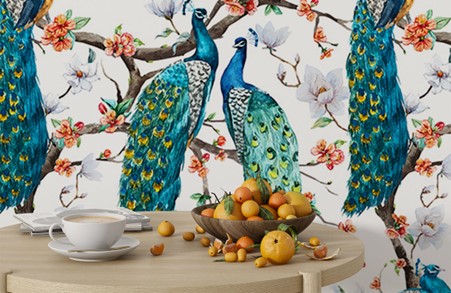In the realm of painting, brushes are the essential tools that allow artists to transfer their creative visions onto canvas or other surfaces. Among the multitude of brushes available, two types stand out: oil brushes and paint brushes. While they might seem similar at first glance, they have distinct characteristics and purposes that every artist should understand to make informed choices in their artistic endeavors.
Oil Brush:
Oil Brush are specifically designed for use with oil paints, which are known for their slow drying time and distinct texture. These brushes typically have stiffer bristles compared to brushes used with other types of paint. The reason behind this is that oil paints are thicker and require more manipulation, so stiffer bristles help in handling the paint effectively.
Characteristics of Oil Brushes:
Bristles: Oil brushes commonly feature bristles made from natural fibers such as hog hair or synthetic fibers designed to mimic natural bristles. The stiffness of these bristles allows artists to work the thick consistency of oil paints without the bristles splaying or losing shape.
Handles: Handles of oil brushes are usually longer compared to other brushes. The longer handle provides artists with better control and precision, especially when working on larger canvases or making broad strokes.
Shape: Oil brushes come in various shapes and sizes to suit different painting techniques and styles. Flat, filbert, round, and fan brushes are among the most commonly used shapes, each serving a specific purpose in oil painting.
Advantages of Oil Brushes:
Versatility: Oil brushes can handle a wide range of painting techniques, from thick impasto strokes to delicate glazes.
Durability: Due to the sturdiness of their bristles, oil brushes tend to last longer with proper care and maintenance.
Compatibility: Oil brushes are designed to work seamlessly with oil paints, ensuring optimal performance and results.
Paint Brush:
The term “paint brush” is a more general one and can refer to brushes used with various types of paint, including watercolor, acrylic, and gouache. Unlike oil brushes, paint brushes are not specialized for a particular type of paint but are versatile tools that artists can use across different mediums.
Characteristics of Paint Brushes:
Bristles: Paint brushes come with a variety of bristle options, including natural hair (such as sable, squirrel, or camel hair) and synthetic fibers. The choice of bristles depends on the type of paint and the desired effect.
Handles: Paint brush handles can vary in length and shape, with some brushes featuring shorter handles for close-up work and others having longer handles for better reach and control.
Shape: Similar to oil brushes, paint brushes are available in various shapes like round, flat, angular, and mop brushes, each suitable for different painting techniques and styles.
Advantages of Paint Brushes:
Multifunctionality: Paint brushes can be used with a wide range of paint types, making them versatile tools for artists who work across different mediums.
Accessibility: Paint brushes are widely available and come in various price ranges, making them accessible to artists of all levels and budgets.
Experimentation: With paint brushes, artists can explore different techniques and styles, allowing for greater experimentation and artistic expression.
Choosing the Right Brush:
When it comes to selecting between oil brushes and paint brushes, consider the following factors:
Medium: Determine the type of paint you will be using for your artwork. If you primarily work with oil paints, invest in high-quality oil brushes designed specifically for that medium. For artists who work with multiple mediums, opt for versatile paint brushes that can be used across different paint types.
Technique: Consider your painting style and preferred techniques. Oil brushes are ideal for thick, textured applications characteristic of oil painting, while paint brushes offer more flexibility for various painting styles and effects.
Budget: Assess your budget and invest in brushes that offer the best value for your money. While quality brushes can be more expensive, they often last longer and yield better results in the long run.
Conclusion:
In the world of painting, brushes play a crucial role in bringing artistic visions to life. Understanding the differences between oil brushes and Paint Brush empowers artists to make informed choices based on their medium, technique, and budget.
Whether you’re an oil painting enthusiast or a mixed-media artist, choosing the right brush is essential for achieving the desired results and unleashing your creativity onto the canvas.













